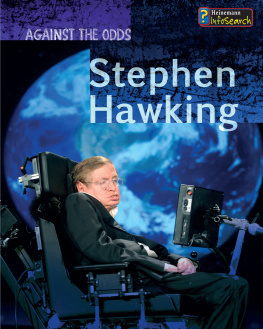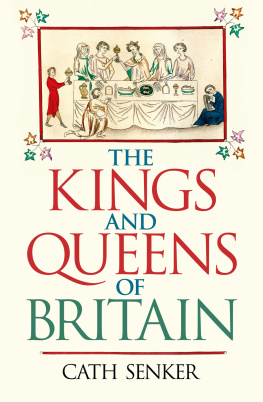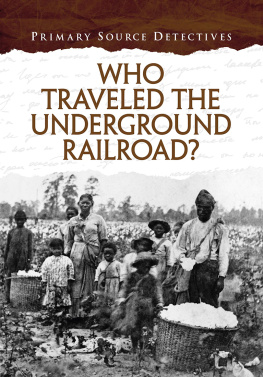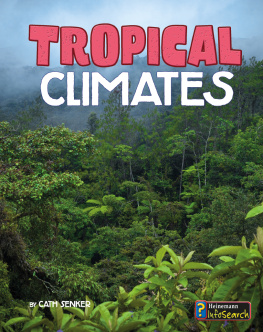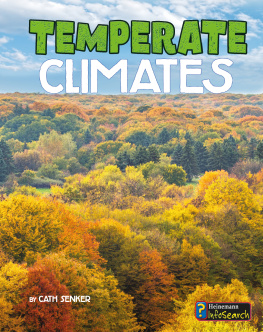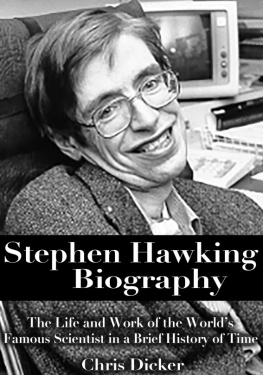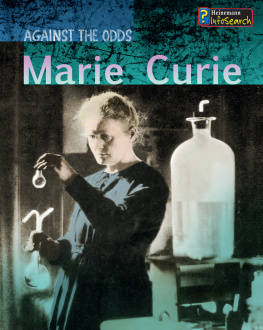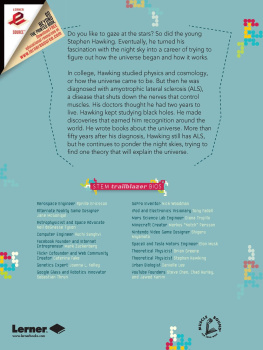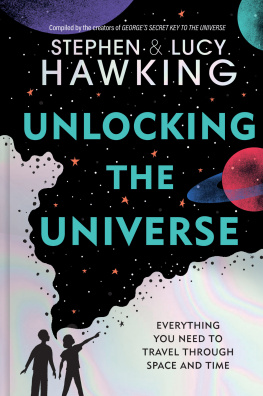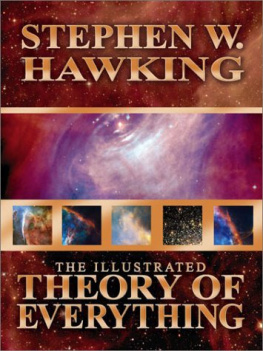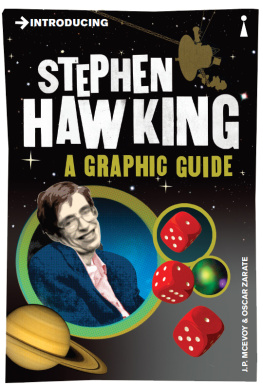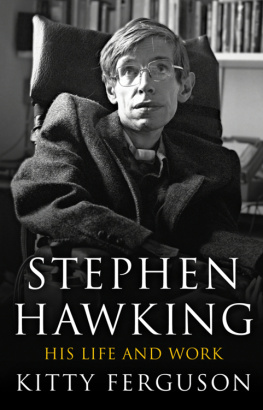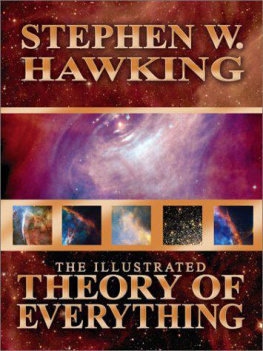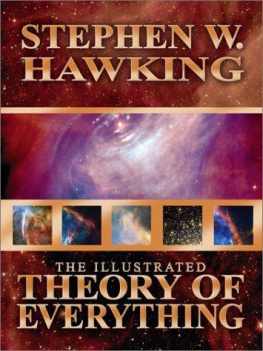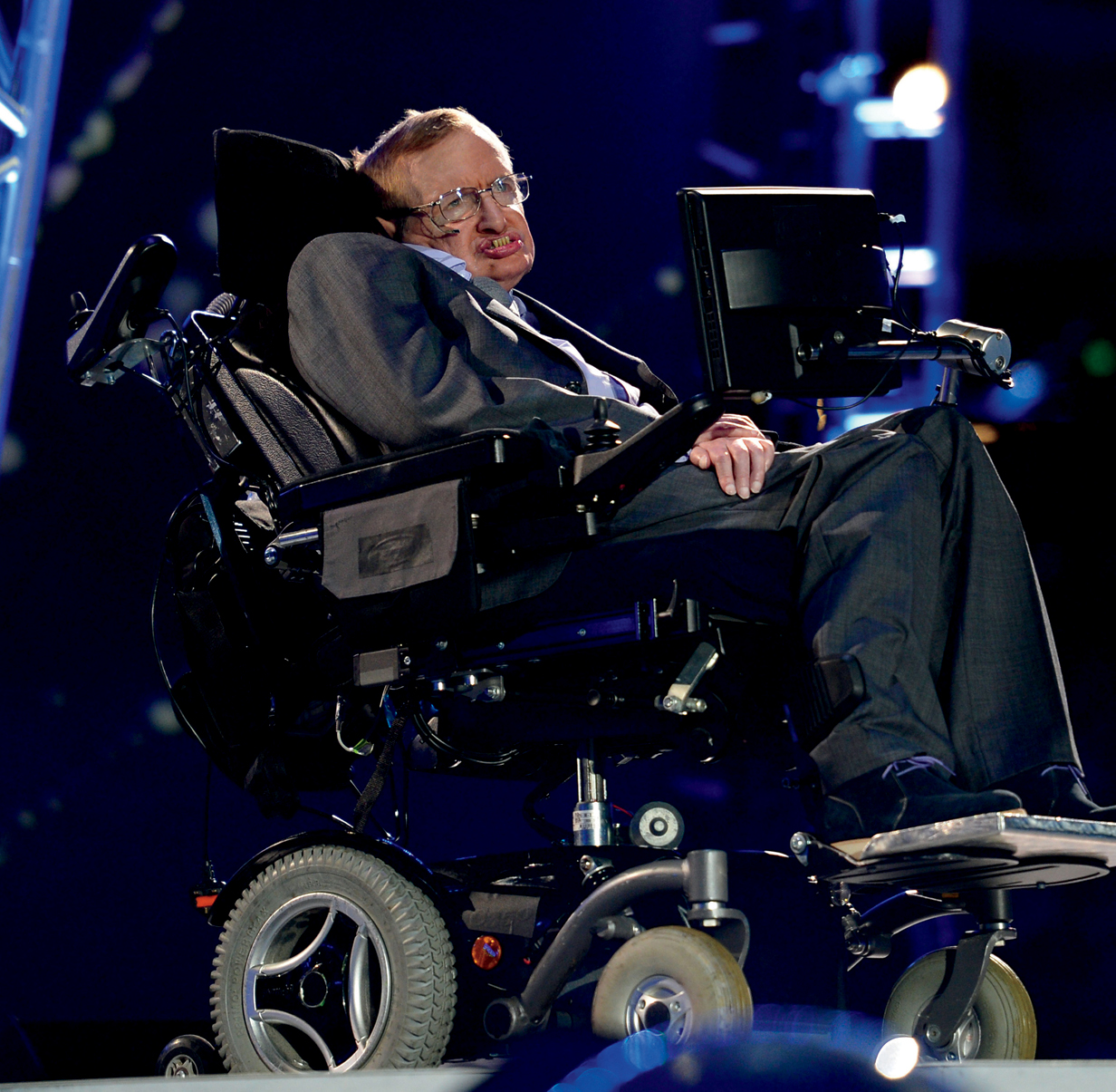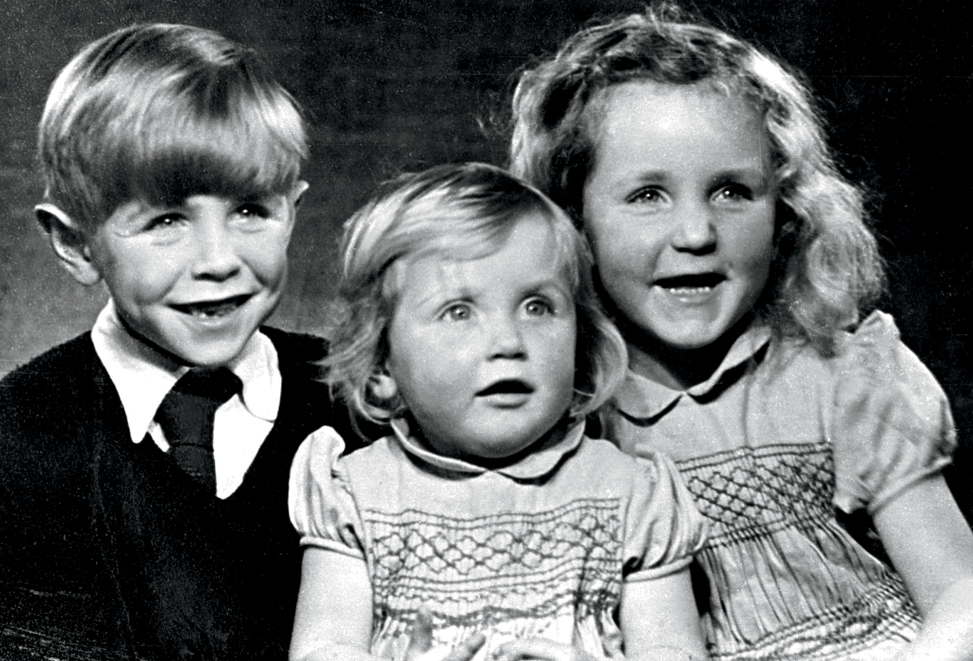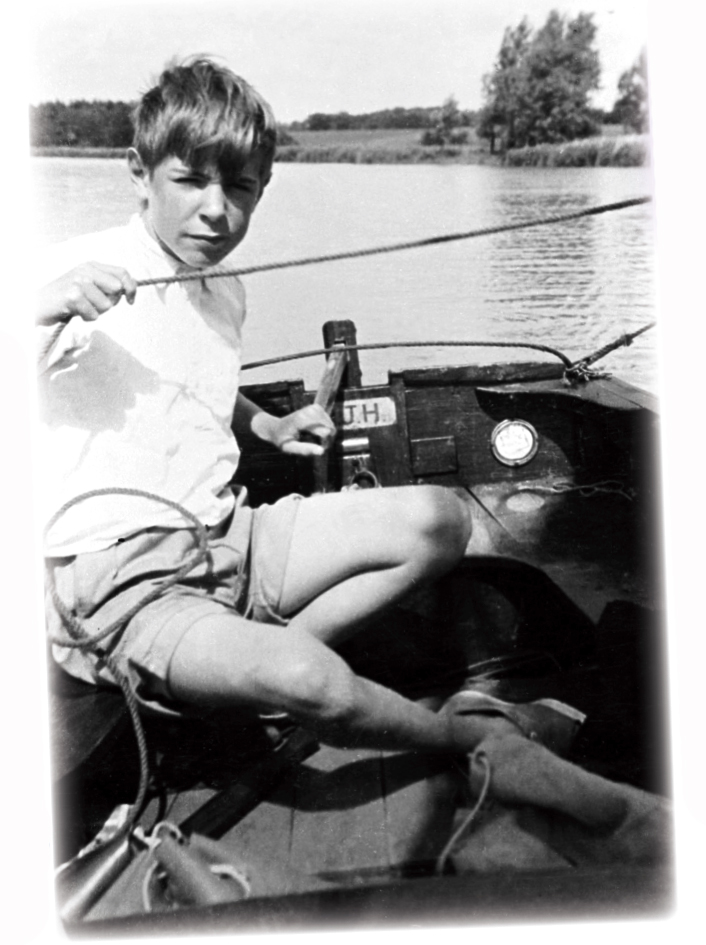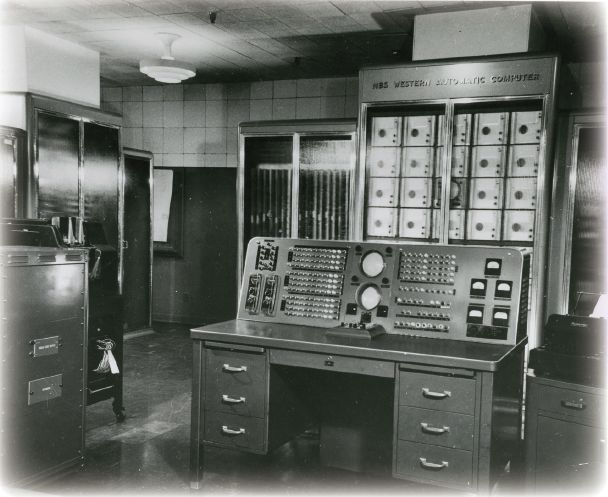Hawking makes an important discovery about black holes that makes him famous in theworld of cosmology
Hawking discovers that black holes can give off radiation. He is elected Fellow ofthe Royal Society. The Hawkings go to California for a year.
Hawking and Thomas Hertog invent top-down cosmology as a way to figure out what theuniverse was like in the past
Find Out More
Books
Kenney, Karen Latchana. Stephen Hawking: Extraordinary Theoretical Physicist (GreatMinds of Science). Minneapolis: Core Library, 2014.
Lee, T. S. The Stephen Hawking Story (Great Hero). Englewood Cliffs, N.J.: JoyfulStories, 2009.
Web sites
www.hawking.org.uk
This is Stephen Hawking's official web site about his life and work.
science.nasa.gov/astrophysics/focus-areas/what-powered-the-big-bang
This NASA web site explores the Big Bang, with links to details about the most recentdiscoveries about this area of study.
spaceplace.nasa.gov/black-hole-rescue/en
This NASA web site for younger readers is about black holes.
DVDs
Into the Universe with Stephen Hawking (Discovery Channel, 2013)
Stephen Hawkings Universe (GoEntertain, 2011)
Through the Wormhole with Morgan Freeman (Discovery Channel, 2014)
Place to visit
Rose Center for Earth and Space
81 Central Park West, New York, N.Y. 10023
www.amnh.org/exhibitions/permanent-exhibitions/rose-center-for-earth-andspace
Learn more about the history of the universe at this amazing museum, which includesthe Hayden Planetarium, a movie theater experience that explains the Big Bang, andmore.
Who Is Stephen Hawking?
Stephen Hawking greets the audience at the opening ceremony of the London 2012 Paralympics.
It is the opening ceremony of the 2012 Paralympic Games in London, England. StephenHawking, probably the most famous living scientist, wheels onto the stage. Watchedby millions of viewers around the globe, he launches the event, to the ecstatic cheersof the crowd.
Hawking is known worldwide for his great contribution to . Just as importantly, he has encouraged the generalpublic to take an interest in science.
Success against the odds
Hawkings success as a scientistand his very survivalare against all the odds.When he was 21, he was told he had two years to live. Yet 50 years later, he stillgoes to work every day at Cambridge University, in England, helping students,discussing ideas with staff and students, and working on his own theories. Sometimeshe is interrupted by a visit from a famous person, such as former astronaut BuzzAldrin, one of the first men on the Moon.
Stephen Hawking was a talented student at Oxford University, a top university. Hecontinued his studies at Cambridge University and became a cosmologist. Hawking madeimportant discoveries about in space and developed a new way of workingin cosmology.
Hawkings biographers, Michael White and John Gribbin, have written that:
He hasachieved astounding success by awakening a skeptical [doubtful] public and an evenmore skeptical media to the beauty of science, a subject at the heart of our societyand the future of civilization.
What Was Stephen Hawkings Childhood Like?
Stephen was the first baby born to Frank and Isobel Hawking, on January 8, 1942.His parents had both attended Oxford University, in England, although it was unusualto go to college in the 1930s, especially for women. After college, his father becamean expert in tropical diseases, while, like most women in those days, his motherraised the family.
This shows Stephen Hawking as a schoolboy with his younger sisters, Mary and Philippa.
Whos who
Dikran Tahta
(19282006)
Stephen was inspired by Dikran Tahta, his math teacher at St. Albans school. Tahtaencouraged his students to think creatively about their subject and take part inlively discussions. He later became a mathematics teacher at Exeter University, inEngland.
A family of thinkers
Stephen had two younger sisters, Mary and Philippa, and an adopted brother namedEdward. Frank and Isobel gave their children plenty of freedom. The house was fullof books, and the family talked freely about all kinds of subjects. Other peoplethought the Hawkings were a little strange. They went on vacations in a brightlypainted wooden trailer pulled by a horse and once drove to India in an old car.
As a child, Stephen loved making things. When Frank made Mary a dollhouse, Stephenput in plumbing and lighting. As he later explained, he had a passion to understandhow things workedfrom toy trains to the universe. Young Stephen often gazed atthe sky for hours.
At the age of 11, he passed an exam that allowed him to go to a special secondaryschool, and he then started as a student at St. Albans school, near London.
A teenage scientist
As a teenager, Stephens interest in science grew, and he filled his bedroom withmetal and wire gadgets. He wasnt interested in rock and roll music like many otheryoung people. Instead, he and his friends enjoyed reading, making complicated boardgames, going on long bike rides, and attending classical music concerts.
This photo shows Stephen enjoying boating in the 1950sa hobby he would later takeup at college.
While Stephen was studying for his A levels (exams that British students take at18) in math, physics, and chemistry, he built two computers from scratch with hisfriends, using clock parts and parts from a telephone switchboard. They called itthe Logical Uniselector Computing Engine (LUCE). It solved logical problemsif thiscondition is true, then another thing will happen. Years later, the schools computingteacher found a box of junk and threw it away. He had no idea it held Hawkings computer.

